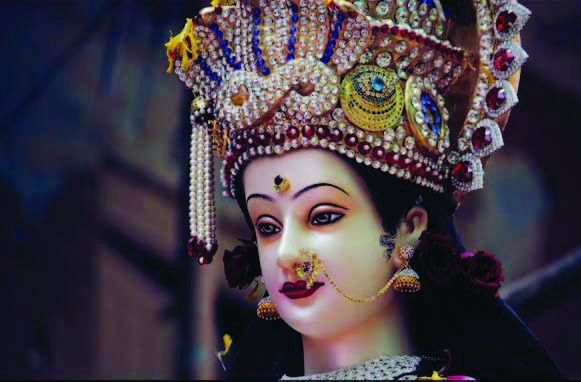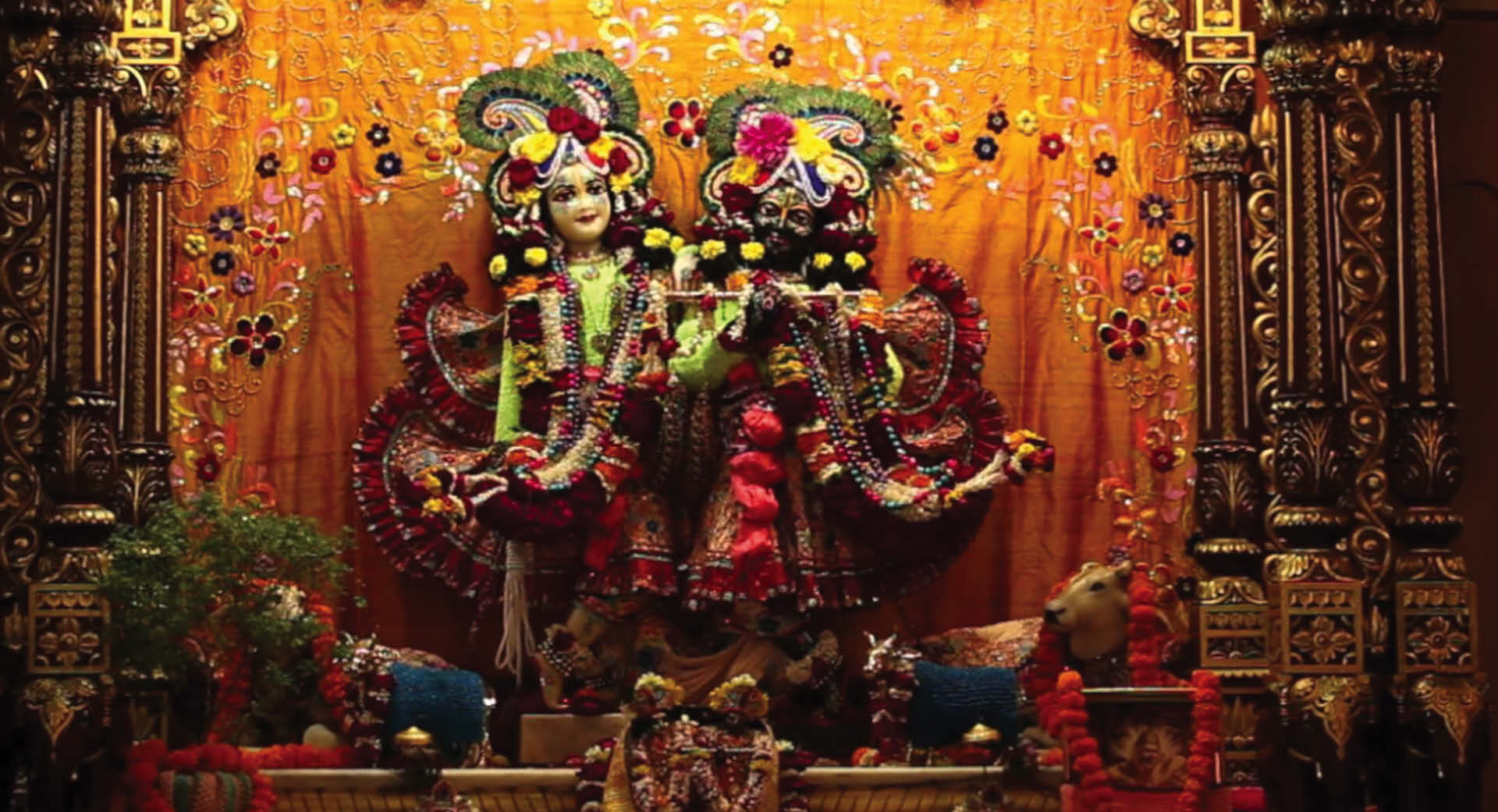
Goddess Shakti is worshipped and offered prayers during the nine days
CHAITRA NAVRATRI IS MORE POPULAR IN NORTHERN INDIA. IN MAHARASHTRA CHAITRA NAVRATRI BEGINS WITH GUDI PADWA AND IN ANDHRA PRADESH IT BEGINS WITH #UGADI
Chaitra Navratri is nine days festivity which starts on the first day of Hindu Luni-Solar calendar and falls in the month of March or April. Chaitra is the first month of Hindu lunar calendar and because of it this Navratri is known as Chaitra Navratri. Chaitra Navratri is also known as Vasanta Navratri. Rama Navami, the birthday of Lord Rama usually falls on the ninth day during Navratri festivity. Hence Chaitra Navratri is also known as Rama Navratri.
All nine days during Navratri are dedicated to nine forms of Goddess Shakti. Most customs and rituals followed during Shardiya Navratri, which falls in the month of September or October, are also followed during Chaitra Navratri. Ghatasthapana Puja Vidhi for Shardiya Navratri and Chaitra Navratri is same.
Chaitra Navratri is more popular in northern India. In Maharashtra Chaitra Navratri begins with Gudi Padwa and in Andhra Pradesh it begins with Ugadi.
Ghatsthapana, Shailputri Puja
The first day of Chaitra Navaratri festival will fall on March 28, Tuesday. Goddess Shailputri is worshipped on the first day of Navratri. Just like the Shardiya Navratri, most of rituals and traditions remain similar during the spring festival celebrations. Ghatasthapana Muhurta is the most important ritual which is to be followed dedicatedly as it marks the beginning of Chaitra Navaratri festivity. Ghatasthapana is an invocation of Goddess Shakti and to be done only in shubh muhurat time. Ghatasthapana is also known as Kalash Sthapana or Kalashsthapana.
Chandra Darshan, Brahmacharini Puja
The second day of Chaitra Navaratri festival will fall on March 29, Wednesday. Goddess Brahmacharini is worshipped on the second day of Navratri. Dwitya also marks the 2017 Chandra Darshan, the first day of moon sighting after no moon day also known as Amavasya. Goddess Brahmacharini is believed to be controlling Lord Mangal, the provider of all fortunes according to Hindu legends and hence worshipping the goddess brings happiness and prosperity.
 Gauri Teej, Chandraghanta Puja
Gauri Teej, Chandraghanta Puja
The third day of Chaitra Navaratri festival will be on March 30, Thursday. Goddess Chandraghanta is worshipped on the third day of Navratri. She is believed to govern the shukra (Venus) planet. According to ages old mythology, she drives away the spirits troubling her devotees with the sound of the moon-bell present on her forehead. The day is observed as Gangaur also known as Gauri Tritiya. Gangaur festival is widely celebrated in Rajasthan and some parts of Uttar Pradesh, Madhya Pradesh, Haryana and Gujarat.
Varad Vinayaka Chauth, Kushmanda Puja
The fourth day of Chaitra Navaratri festival will be on March 31, Friday. Goddess Kushmanda is worshipped on the fourth day of Navratri. She governs the God Sun and is the source of energy and direction of Sun. Kushmanda Puja and Varad Vinayaka Chauth is celebrated on Chaturthi. Varad means “asking God to fulfill any desire one has”. Goddess Kushmanda is worshipped with her favourite red coloured flowers.
Lakshmi Panchami, Skandamata Puja
The fifth day of Chaitra Navaratri festival will be on April 1, Saturday. Goddess Skandamata is worshipped on the fifth day of Navratri. This form of Goddess Parvati, Goddess Skandamata governs Planet Budha (Mercury), and red coloured flowers are also used to worship her. Devotees worship Skandamata also gets the benefit of worshipping Lord Kartikeya. Panchami is also widely celebrated as Kalpadi Tithi. Chaitra Shukla Panchami is also known as Lakshmi Panchami, dedicated to Goddess Lakshmi, the Goddess of wealth and prosperity. Among Tamil Hindus, this day is celebrated as Skanda Sashti or Kanda Sashti Vratam 2017 as Skanda, son of Lord Shiva and Goddess Parvati is a favorite deity.
Yamuna Chhath, Katyayani Puja
The sixth day of Chaitra Navaratri festival will be on April 2, Sunday. Goddess Katyayani is worshipped on the sixth day of Navratri. She governs the planet B?haspati (Jupiter). Roses are the favourite flowers to worship Goddess Katyayani. The day also marks the birth anniversary of Goddess Yamuna and celebrated as Yamuna Jayanti. Yamuna Chhath is a popular festival celebrated in Indian city Mathura.
Maha Saptami, Kalaratri Puja
The seventh day of Chaitra Navaratri festival will be on April 3, Monday. Goddess Kalaratri is worshipped on the seventh day of Navratri. Goddess Kalaratri is also known as Goddess Shubhankari and worshipped with night-blooming Jasmine flowers. She is believed to govern planet Shani (Saturn). She is one of the most powerful and ferocious forms of Goddess Parvati and said to remove the darkness from the lives of her pure-hearted devotees and wrath hell on the evil-doers.
Durga Maha Ashtami, Mahagauri Puja
The eighth day of Chaitra Navaratri festival will be on April 4, Tuesday. Goddess Mahagauri is worshipped on the eighth day of Navratri. This form of Goddess Parvati governs the planet Rahu (Neptune). Masik Durgashtami 2017 also falls on the day with devotees fasting during Ashtami Tithi of Shukla Paksha. The day also marks the Sandhi Puja, which has a special significance during Navratri festival puja. Sandhi Puja is done at the juncture when Ashtami Tithi ends, and Navami Tithi starts.
Rama Navami, Siddhidatri Puja
The ninth and final day of Chaitra Navaratri festival will be on April 5, Wednesday. Goddess Siddhidatri is worshipped on the ninth day of Navratri. Siddhidatri is believed to provide energy and direction to planet Ketu (Uranus). She can award ultimate power and fulfill every wish of her devotee. 2017 Chaitra Navratri Parana is done with the end of Navami Tithi ends, and Dashami Tithi begins. The day also marks the birth of Lord Rama, the human incarnation of Lord Vishnu. Rama was born on Navami Tithi during Shukla Paksha of Chaitra month and the day is celebrated as Ram Navmi festival across India.





Be the first to comment